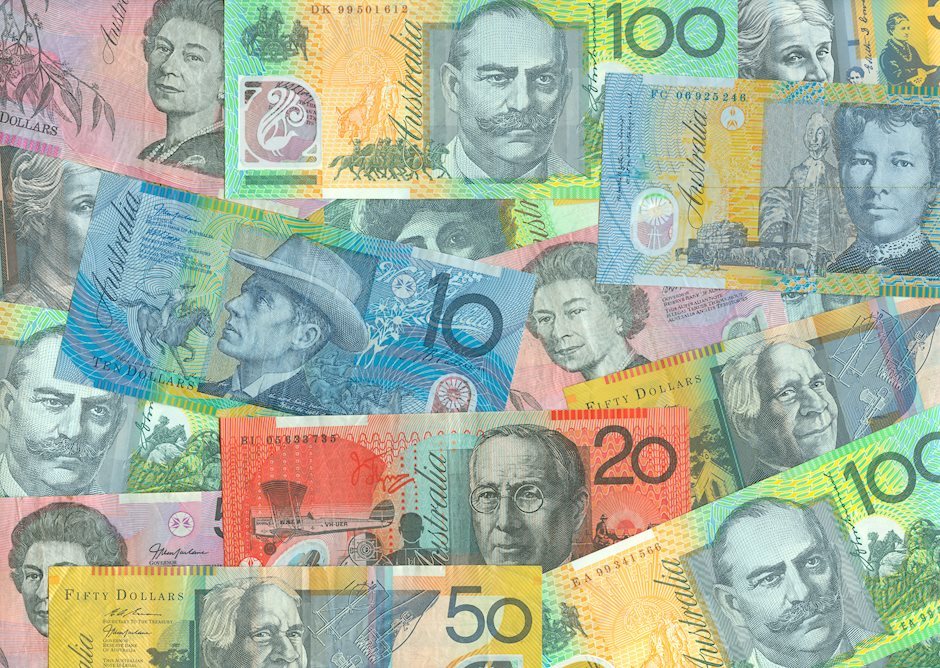Australian Dollar recovers on USD weakness
- The Aussie Dollar benefits from a weaker US Dollar and strong employment data.
- China's economic slowdown weighs on risk sentiment and limits AUD gains.
- Soft housing data also weighed on the USD on Friday.

The AUD/USD pair extended its recovery momentum on Friday and rose mildly to 0.67055, with a positive risk tone and hawkish Reserve Bank of Australia (RBA) expectations due to strong local data underpinning the Aussie. A consolidating US Dollar also helped the pair to rise.
Due to strong employment data release this week, markets might start betting on a more hawkish RBA. As for now, the consensus indicated a single 25 bps cut in 2024.
Daily digest market movers: Australian Dollar rises amid risk-on tone and hawkish RBA expectations
- AUD strengthens due to positive domestic employment data, diminishing expectations for RBA rate cuts.
- Risk-on sentiment in global equity markets undermines USD safe-haven demand.
- This week, employment increased by 64.1K, showing slightly higher growth than the strong results seen in August with most gains in full-time jobs.
- The unemployment rate was adjusted downward to 4.1%, staying close to historic lows and significantly below the decade’s average.
- In the meantime, investors continue to place bets on a 25 bps cut by the RBA by years-nd. However, if data continue to come in strong, those odds might fade.
AUD/USD technical outlook: Pair recovers, might have hit bottom
The Relative Strength Index (RSI) has recently risen upwards in the negative area, suggesting that buying pressure is recovering. Meanwhile, the Moving Average Convergence Divergence (MACD) is flat, implying that selling pressure is currently flat. Overall, the AUD/USD pair is technically mixed but with signs of a recovery.
For the next session, the buyer’s task is to defend the 0.6700 area and build support around it.
RBA FAQs
The Reserve Bank of Australia (RBA) sets interest rates and manages monetary policy for Australia. Decisions are made by a board of governors at 11 meetings a year and ad hoc emergency meetings as required. The RBA’s primary mandate is to maintain price stability, which means an inflation rate of 2-3%, but also “..to contribute to the stability of the currency, full employment, and the economic prosperity and welfare of the Australian people.” Its main tool for achieving this is by raising or lowering interest rates. Relatively high interest rates will strengthen the Australian Dollar (AUD) and vice versa. Other RBA tools include quantitative easing and tightening.
While inflation had always traditionally been thought of as a negative factor for currencies since it lowers the value of money in general, the opposite has actually been the case in modern times with the relaxation of cross-border capital controls. Moderately higher inflation now tends to lead central banks to put up their interest rates, which in turn has the effect of attracting more capital inflows from global investors seeking a lucrative place to keep their money. This increases demand for the local currency, which in the case of Australia is the Aussie Dollar.
Macroeconomic data gauges the health of an economy and can have an impact on the value of its currency. Investors prefer to invest their capital in economies that are safe and growing rather than precarious and shrinking. Greater capital inflows increase the aggregate demand and value of the domestic currency. Classic indicators, such as GDP, Manufacturing and Services PMIs, employment, and consumer sentiment surveys can influence AUD. A strong economy may encourage the Reserve Bank of Australia to put up interest rates, also supporting AUD.
Quantitative Easing (QE) is a tool used in extreme situations when lowering interest rates is not enough to restore the flow of credit in the economy. QE is the process by which the Reserve Bank of Australia (RBA) prints Australian Dollars (AUD) for the purpose of buying assets – usually government or corporate bonds – from financial institutions, thereby providing them with much-needed liquidity. QE usually results in a weaker AUD.
Quantitative tightening (QT) is the reverse of QE. It is undertaken after QE when an economic recovery is underway and inflation starts rising. Whilst in QE the Reserve Bank of Australia (RBA) purchases government and corporate bonds from financial institutions to provide them with liquidity, in QT the RBA stops buying more assets, and stops reinvesting the principal maturing on the bonds it already holds. It would be positive (or bullish) for the Australian Dollar.
Author

Patricio Martín
FXStreet
Patricio is an economist from Argentina passionate about global finance and understanding the daily movements of the markets.

















